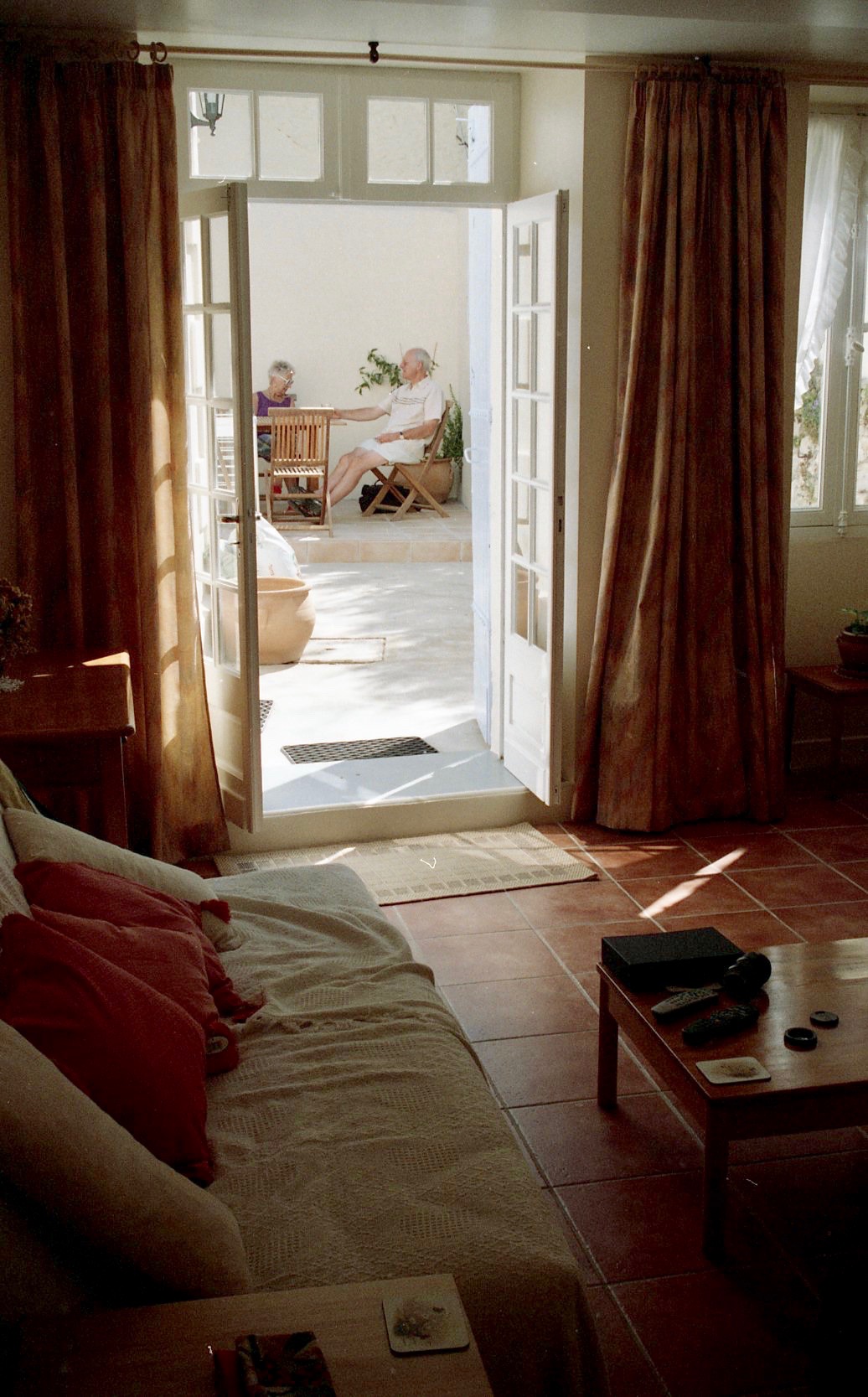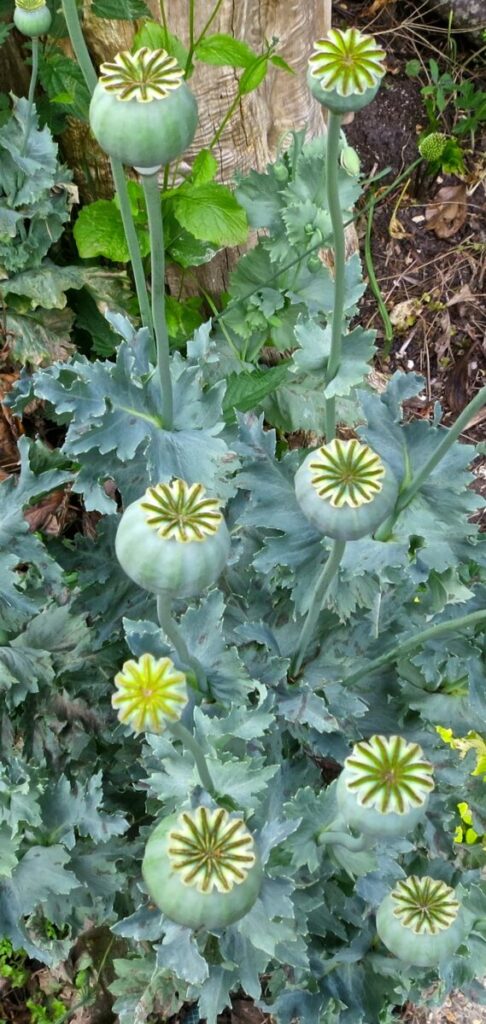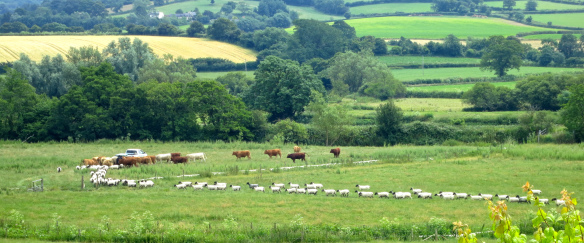This morning I received an e-mail from the agent selling my French house. Attached was the document for me to sign giving the solicitor the authority to sign the contract on my behalf. Three of the original errors persisted. I responded by asking the agent whether I should alter these by hand. My signature has to be witnessed before I send it back by snail mail. I used the word “Aarrggh” in my e-mail.
Although I have featured the house in earlier posts, now is perhaps an appropriate time to respond to the request of Aussie Ian, the Emu, for images of the exterior of the house and its environs. This is a batch of colour negatives made in September 2003, five years before I bought the house from my friends Maggie and Mike. I scanned the pictures today.
No. 6 rue St. Jacques is an 18th century terraced house in the village of Sigoules. The longer of these two images includes Nos. 8, 10, and beyond.
As is evident from these views of the street, the house is situated at the top of a steep hill. Fortunately it is at the town square end. The first three pictures look down the hill from outside the property. The others look up.

There is a small patio garden which is a veritable sun-trap.
During my stay with my friends, we took a number of walks. Here Maggie and Mike pass a man-made fishing lake on their left. Berries, crocuses, and oaks all enlivened the countryside.
The path we were taking led to hills from which we could admire vineyards and the valley below.
Beaumont is one of the bastide towns to which my friends introduced me.
Built during the thirteenth and fourteenth centuries ‘bastides were developed in number under the terms of the Treaty of Paris (1229), which permitted Raymond VII of Toulouse to build new towns in his shattered domains, though not to fortify them. When the Capetian Alphonse of Poitiers inherited, under a marriage stipulated by the treaty, this “bastide founder of unparalleled energy”[5] consolidated his regional control in part through the founding of bastides. Landowners supported development of the bastides in order to generate revenues from taxes on trade rather than tithes(taxes on production). Farmers who elected to move their families to bastides were no longer vassals of the local lord — they became free men; thus the development of bastides contributed to the waning of feudalism. The new inhabitants were encouraged to cultivate the land around the bastide, which in turn attracted trade in the form of merchants and markets. The lord taxed dwellings in the bastides and all trade in the market. The legal footing on which the bastides were set was that of paréage with the local ruling power, based on a formal written contractual agreement between the landholder and a count of Toulouse, a king of France, or a king of England. The landholder might be a cartel of local lords or the abbot of a local monastery.’ (Wikipedia)
During the medieval Hundred Years War between England and France, the French rapidly fortified those towns that had not succumbed in the early destruction. Ownership tended to fluctuate between the two warring Houses, and when it was their turn, the English made good use of the fortifications that had been so effective against them. In fact, various websites inform us that Beaumont-du-Perigord was founded by England’s King Edward I in 1272.
The main feature of all bastides is a central, open place, or square. It was used for markets, and for political and social gatherings. I will introduce some of these in a follow-up post featuring more of these photographs.
For our dinner this evening, Jackie reprised yesterday’s chicken and black bean meal with all its accompaniments and the addition of equal excellent chicken chow mein. She drank Hoegaarden and I consumed the last of the Malbec and a glass of the 2016 vintage.











